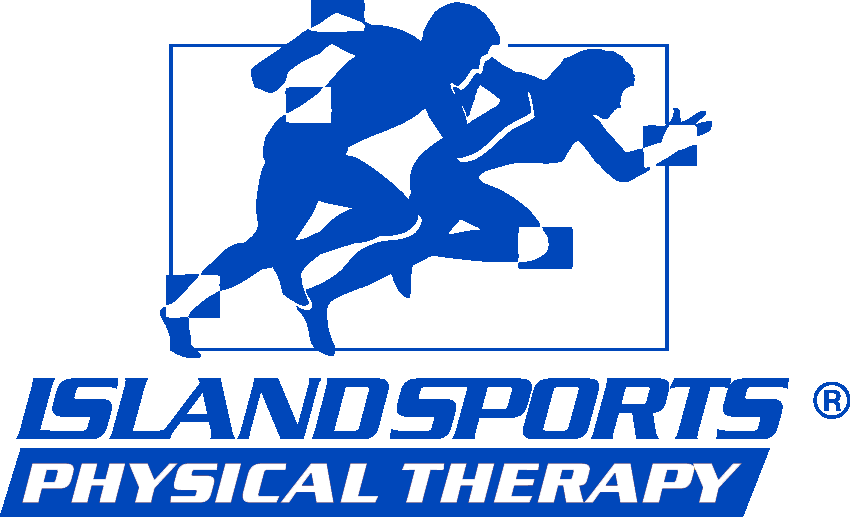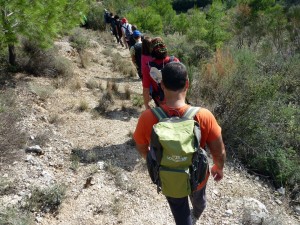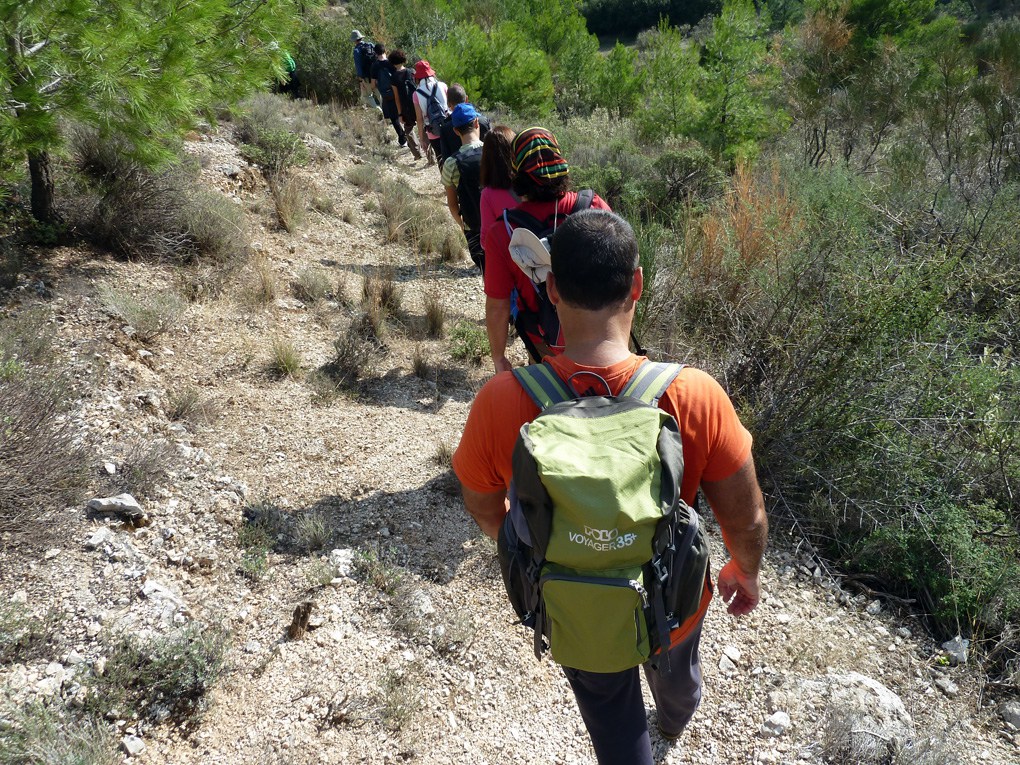
Lyme Disease Prevention
Lyme disease is a common worry during the late spring and summer months. Living on Long Island, especially out on the east end where it is heavily wooded in many areas, the concern of a rogue tick leaching itself onto you, or even your child is very real. Residents in the Northeastern states, the Mid-Atlantic states and in the upper midwest region are at a greater risk than any other region of coming into contact with Lyme disease.
Island Sports Physical Therapy (ISPT), serving the residents of Nassau and Suffolk counties since 1985 wants you to be prepared this summer to avoid getting Lyme disease. Some of the symptoms associated with Lyme disease fall under flu-like symptoms, red expanding skin rash, Bell’s Palsy (facial muscle weakness), severe headache and nerve stiffness, fainting, shortness of breath, heart palpitations, shooting pains, pain/swelling in large joints, and light headedness.
According to the CDC (Center for Disease Control) in Atlanta, about 300,000 infections of Lyme disease occur each year. Lyme disease is spread through the bite of one infected tick. The tick that is most commonly associated with spreading Lyme disease is called the black legged tick.
The black legged tick is most commonly found anywhere through the eastern seaboard and like many ticks, can be found in humid environments with thick vegetation.
It is almost summer time and odds are you want to be spending the majority of your time outdoors and enjoying Summer activities and long nights outside around a campfire. So what are some steps that you can take to make sure you can avoid getting a tick bite? For starters, the CDC recommends that you use repellent that contains 20% or more DEET (diethyltoluamide) the most common, active ingredient in insect repellent. When applying insect repellent, focus it more on your legs and clothing. Do not get it on your hands, face or in your eyes.
You should also perform daily tick checks at the end of every day or outdoor activity on yourself and children. Areas you want to pay close attention to are under the arms, in and around the ears, inside the belly button, back of the knees, in and around all head and body hair, in between the legs and around the waist.
If you are hiking, playing in the backyard, or in an area with thick vegetation, try and avoid walking through bushes or grass that is above ankle height. If you do, a good technique is to wear your socks around your pant legs or pull them all the way up to your mid-calf section. As much as we want to wear flip flops or sandals during the summer month, it is always a good idea to wear sneakers with socks when doing outdoor activities to avoid a rogue tick attaching itself to you.
ISPT wants you to have a happy, healthy and safe summer. So start your summer off right, avoid any risk of coming into contact with Lyme disease and take the necessary precautions in order to assure you or your children do not develop the risk of Lyme disease.

Senior Physical Therapy
Fitness programming is a very important part of beginning a healthy lifestyle, it is especially important in the senior community. There are many benefits to fitness programming and there are many things that can contribute to help a fitness program such as physical therapy and resistance training.
In terms of creating a program of resistance training with physical therapy, you have to be sure to make a fair decision of where you are dividing your time as well as what should be focused on more. For seniors, it is best for seniors to focus on full body strengthening with an emphasis on balance. When working with a physical therapist, seniors can reduce the chance of falls significantly, while also help reducing pain and increase mobility. This will allow seniors to gain some independence back, safely and effectively.
Many seniors suffer from osteoporosis, so this is why it is a good idea to have some resistance and strength training into the fitness program so that they can increase bone mass and density as well as alleviate arthritis. With all these added health benefits, psychological and emotional benefits also increase. Having a better sense of independence leads seniors to have a better sense of confidence and just overall living a better lifestyle. Learning the different movements in physical therapy can also be beneficial in that they can teach things that can alleviate the discomfort that they are feeling at home if they can’t make it into the office or to a gym. Just a few simple activation exercises or even some easy everyday activities with some added resistance to them can mean the world of difference.
Fitness programming is something that should be looked at by every age bracket to improve his or her physical fitness and health but is something that someone living in the senior age bracket should consider a necessity. When looking at all the health benefits of a good fitness program with a trained physical therapist. it is an absolute no brainer for any senior to improve their lifestyle and lead a longer life.
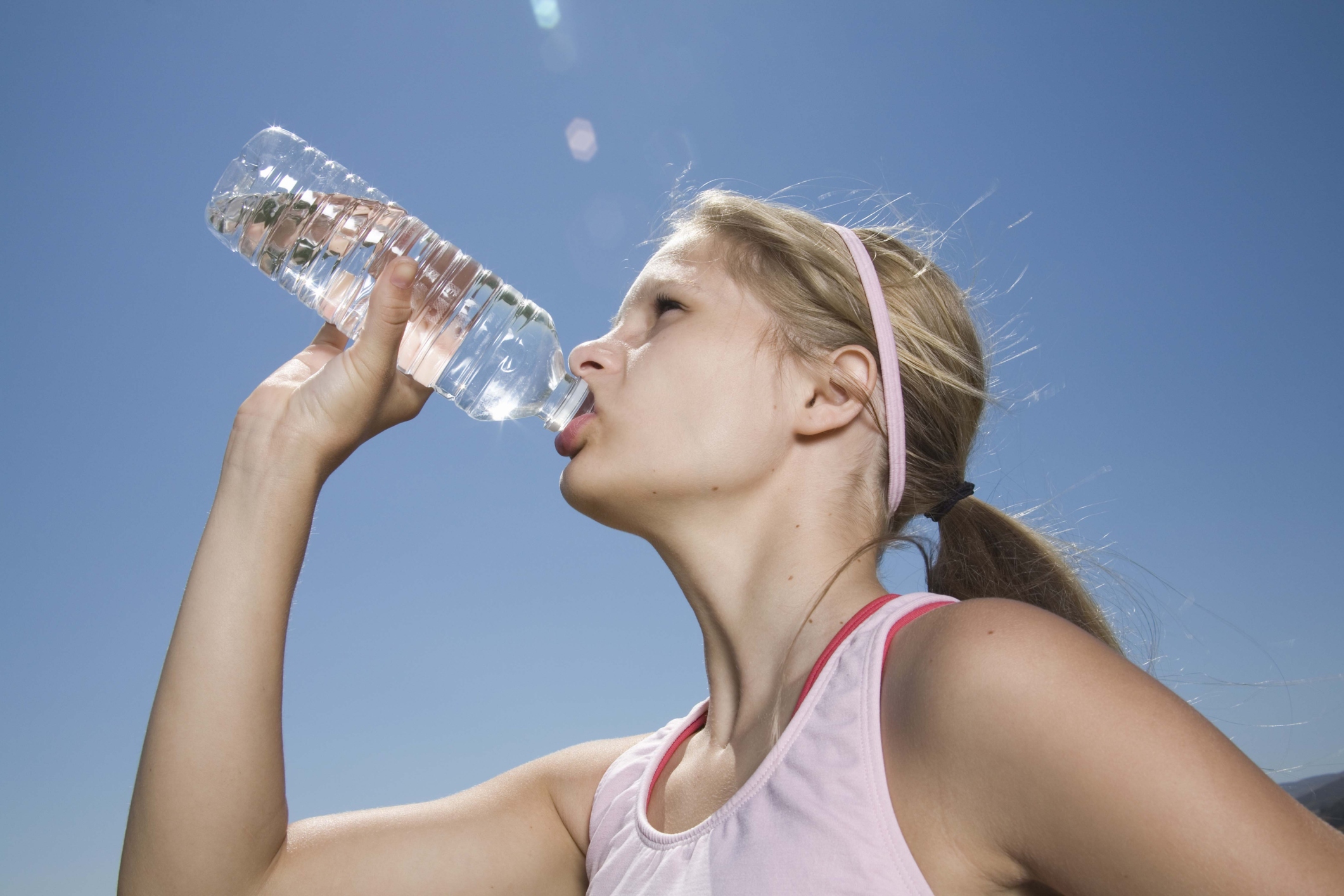
Avoiding Heat Exhaustion on Long Island
With summer approaching, there are many fun outdoor activities to participate in. Although everyone will be itching to get outside and have fun it is important to do everything you can to avoid heat exhaustion during outdoor activities. Heat exhaustion happens more often than some people may think but it’s also easily avoidable as long as you follow some simple guidelines.
One of the most important things to do is to make sure that you stay hydrated; this means drinking water at regular intervals even when you aren’t particularly thirsty. It is recommended that while participating in outdoor activities that you should drink 2 to 4 glasses of water every hour, you can even mix in a sports beverage instead of water in order to replace the salt that your body loses. When it comes to drinking fluids make sure you are not drinking beverages with alcohol in them because this can lead to becoming dehydrated even quicker. If you must drink, alternating between nonalcoholic beverages can help keep your body hydrated. Another thing to make sure of is that the beverages you are consuming aren’t too cold because this can lead to cramping. A precautionary method that can be taken to avoid heat exhaustion is to limit your outdoor activity to the morning and evening hours this way it is still somewhat cool out. When you outdoors make sure to rest in shady areas regularly to limit yourself to exposure to the sun as well as to give your body a break. Make sure to also to wear protective clothing from the sun like a hat and sunglasses as well as to wear and reapply sunscreen throughout the day!
The summer months are always the best out of the year, which makes everyone anxious to get outside and enjoy them, this is why making sure you are taking the appropriate precautions to avoid heat exhaustion while performing outdoor activities is critical. Heat exhaustion is dangerous and not something to be taken lightly, but following these guidelines, you’ll be able to enjoy your summer the right way and heat exhaustion free.
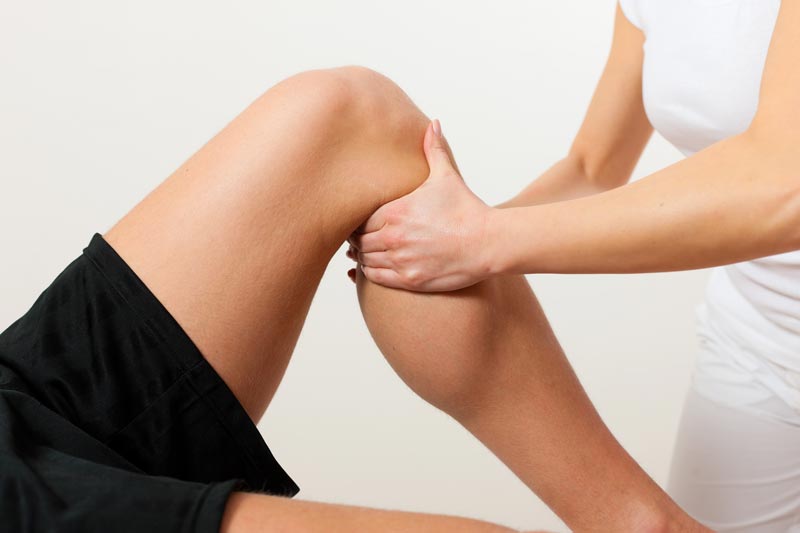
Knee Injuries
One of the most common types of knee pain in athletes, active teenagers, older adults, and people who perform physical labor is patellofemoral pain syndrome. Patellofemoral pain occurs at the front of the knee, in and around the kneecap. Physical therapy is one option that can be customized to fit any person’s situation to help fix and prevent future knee pain.
The first step in determining which type of treatment would be most effective is the evaluation of the patient. After the evaluation, the physical therapist analyzes the results and finds what would be the most successful exercise and rehabilitation program specific for each patient. The strengthening exercises that are used for the knee are targeted at the hip, knee and the ankle.
The physical therapist will continue to work with each patient to keep them active and to maintain their fitness level necessary for their recovery. If it appears that the knee pain is being caused by the alignment and position of a patient’s foot or arch, shoe inserts called orthosis may be an option. The orthosis can lessen the stress to the knee that is caused by excessive rotation as well as the impact that occurs during walking or running.
Two common treatments that may be suggested by the physical therapist to help protect the knees are strength training and functional exercises and electrical stimulation of the knee. Strength training and functional exercises are designed to increase the strength, endurance, and function of the leg muscle as well as support the knee and reduce the stress to the knee joint. Electrical stimulation of the knee is used to increase the strength of the leg muscles and to reduce knee pain. This is done through electrical impulses generated by a device and delivered through electrodes to stimulate the quadriceps femoris; the primary muscle that supports the knee.
Although there are other options to protect the knees from injury, physical therapy is a cost-effective treatment that improves flexibility and relieves pain. Physical therapy reduces the need for surgery and prescription drugs and gives patients the opportunity to partake in a recovery plan that is modified to their needs.
 May is National Fitness and Sports Month
May is National Fitness and Sports Month
A lot of people don’t know that May is National Physical Fitness and Sports Month. Founded by the President’s Council on Fitness, Sports, and Nutrition (PCFSN). National Physical Fitness and Sports Month were founded in 1983 by the Council with the mission to bring awareness to Americans to stay physically fit, eat well, and stay active throughout the month of May. By doing so, you’re promoting a healthy lifestyle for yourself and for others around you. And in the long run, those healthy habits that you develop could become permanent.
Island Sports Physical Therapy (ISPT) is proud to take part in National Physical Fitness and Sports Month, by promoting the importance of staying physically fit and active to its patients. With locations in East Northport, Huntington, Nesconset, and Coram, ISPT is dedicated to providing its patients with the utmost care that they need during their time of rehabilitation. Their highly trained, and compassionate team of Physical Therapists provide world-class treatment that you will not find anywhere else on Long Island. With a hands-on approach, ISPT specializes in Orthopedic and Sports Therapy, Spinal Rehabilitation, Geriatric Rehabilitation, and Personal Wellness.
In an article written by the department of Federal Occupational Health (FOH) called, Rise to the President’s Challenge… Make physical activity part of your life, they mention that adults should be getting at least two-to-two and a half hours of moderately to vigorously physical activity each week. You can do this by spreading it out any way you desire, a half an hour each day, or one hour two days a week.
The health benefits of doing these exercises are excellent for your overall well-being. FOH states that by doing these weekly exercises you can help you maintain a healthy weight, lower your cholesterol, lower your blood pressure, strengthen muscles and bones, reduce your risk for heart disease, diabetes, some cancers, and obesity.
Other ways you can stay physically fit and active is by joining a community sports league of some sort. Almost every community offers some sort of sports league that you can get involved in. It is a great way to connect with the people in your community, and also an excellent way to get in shape and keep yourself active. The FOH states that by joining a community league you, provide yourself with the opportunity to connect with others, lift your spirits, and it gives you a new outlook on a problem or project.
Not only are the health benefits of staying physically fit and active crucial to your physical well-being, but they are also crucial to your overall mental well being. Be active in your community and make a difference while at the same time improving your health. Your body will thank you in the long run.

Spring Sports Safety
Spring is here! It may not have been the winter that we had the previous year, but the long, cold winter months have kept us locked inside the house, and it’s time to get rid of that cabin fever and get back to being healthy and active! Spring is a very popular sports season and is a time for athletes to get back in shape and for us non-athletes to shake out the winter blues and get the body moving again.
Safety, however, is of utmost importance when playing, especially for younger athletes. Concussions can cause both short and long term issues, and sprains, tears, and even breaks can be common amongst the many sports popular during the Springtime. Baseball, soccer, lacrosse, and golf are some of the most played sports in March through June, and it is best to keep yourself safe so you can be on the field for the whole season!
Baseball may not be our national pastime, but it is still immensely popular at all ages, from Tee-Ball to your beer softball league. The biggest concern for baseball is concussions. The dreaded line drive back to the pitcher is one of the scariest plays in sports, and it is always best to use precaution and stay alert in the field. Although there seems to be a lot of standing around, baseball involves short bursts of speed and intensity, and your body must be stretched out properly to avoid any sort of strains or pulls.
Soccer is another common spring sport and can be a great way to stay healthy and active, but soccer players run the risks of a multitude of leg injuries due to the constant motion, so it is always advised to be well stretched out. Lacrosse is another sport where contact is a concern, and it is best to make sure all of your equipment is working. Golf is very popular for those who are older or do not have the time to play an organized sport, and you can keep yourself on the links by using proper swinging techniques so not to throw your back out.
Island Sports Physical Therapy wants to make sure you stay safe during this sports season, so be sure to always make sure you are doing your best to avoid injury.
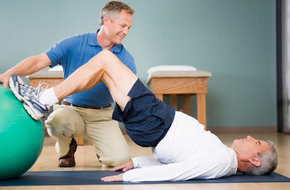
Physical Therapy in East Northport
Gait training, or gait rehabilitation, is a form of physical therapy which helps people of all ages improve their ability to stand or walk after sustaining an injury or disability. Island Sports Physical Therapy, with locations in East Northport, Huntington, Nesconset, Coram, East Meadow, and Glen Cove, focuses on the individual first as they try to achieve their rehabilitative goals.
Fall prevention is one of the main reasons for gait training, especially for the elderly. Falls are the leading cause of fatal and non-fatal injuries in the elderly, and one-third of all Americans aged 65 and older fall each year. Gait training can be used as a preventative measure for older people who wish to remain independent or who live alone. Island Sports Physical Therapy can make sure you learn the correct movements and techniques to avoid falls.
Gait training is also used as a rehabilitative measure for people who may have lost the ability to walk due to an injury or illness. Gait training will begin once prescribed by a doctor as a part of a physical therapy routine. The patient will first be evaluated by the physical therapist to see if they are physically able to perform the movements of gait training. The physical therapists at Island Sports Physical Therapy will be able to give a patient an individualized plan of action to execute both in the home and at the office.
A person who has been immobile for quite some time may have difficulties walking again, and since gait training is exercising the cardiovascular system, the transition may be a little tough for those with walking issues. The physical therapists at Island Sports Physical Therapy realize that this can be both a physical and mental challenge, and are there to help you every step of the way towards your goal of improved or regained mobility.
Physical Therapy for Neurological Rehabilitation
Nervous system damage can be caused by various conditions or disorders such as stroke, Parkinson’s, cerebral palsy, and multiple sclerosis. Physical therapy for treatment or recovery, also known as neurorehabilitation, aims to help patients successfully overcome these ailments. The process can be long and quite arduous as some patients must either learn a “new way” to live, or slowly recover functionality that may have been lost due to the condition or disease. If there has been brain or spinal damage, neurorehabilitation aims to have the patient gain independence and help families cope with the change and adapt to this new way of living that physical therapy hopes to develop.
Neurorehabilitation uses the skills and abilities that have not been compromised by the condition or disease in order to find the highest order of independence possible. Damage to the nervous system can take away the most basic of functions for a patient, and getting them back to living a normal life the best way they can is the ultimate goal. Physical therapy can help patients find a way to live with the condition, find happiness, and regain lost self-esteem due to the condition or the disease.
The nervous system is repaired through increasing the patient’s well being while training or re-teaching patients various mobility, communications, or occupational therapies while aiming to restore the person back to a normal, daily routine. Neurorehabilitation uses a wide variety of different methods to do this, including holistic approaches, while focusing on nutrition and creativity in order to get the patient back on his or her feet. Speech therapy is also a big part of neurorehabilitation as these conditions or diseases may cause a patient to lose cognitive and speaking abilities, and with the advancement of science and technology, these therapies are helping people more and more with their recovery.
How to Do a Proper Warmup/Cooldown When Exercising
Exercising is a great physical activity, but it is just as important to warm up before and cool down after you perform your exercise as it could even help prevent you from injury. Warmups and cooldowns are also said to improve athletic performance, although there is no actual evidence. There is some controversy to these exercises, but they also don’t pose any risks to the user as well. Some people don’t prefer to do them because it takes time the hat some don’t have, but all it takes is a few extra minutes that could help you out in the long run.
Warmups usually involve performing the activity you are about to do at a slower pace and with reduced intensity. Warming up before the main exercise gets the body’s cardiovascular system working, and it also dilates the blood vessels ensuring that the muscles are well supplied with oxygen, and ready to perform physical activity. When preparing to do a warmup, you should focus on the larger muscles first, like hamstrings or quads, and go from there to the specific muscles you will use in your activity. It’s normal to start sweating a little while warming up, but you won’t feel fatigued and exhausted, that will most likely come after the main exercise.
Cooldowns are just like warm-ups, but you are in gradual recovery and the key is to lower your heart rate and blood pressure. The cooldown should last just as long as a warmup (5-10 minutes) to get you ready for the exercise as going at a slower pace will help bring your heart rate down gradually and you won’t feel like you will want to pass out right after exercise.
It is common to think that stretching and warmups/cooldowns are the same thing, but they actually are two separate things. Stretching should come after warmups/cooldowns when your muscles are still warm. Stretching can improve your range of motion against a joint and improve flexibility as well, thus improving performance too. Stretching also reduces the buildup of lactic acid which can lead to muscle cramps and stiffness.
Warm-ups and cooldowns when exercising will help loosen you up, as well as possibly preventing injury and help with your performance. It doesn’t take that much extra time to perform, plus you’re helping yourself out by helping your body. Try walking to and from the gym if it is close enough, that’s an easy way to warm up and cool off after hitting the gym. Stretching is helpful as well, but combining the three could really help you out, and make you feel better after a good workout!

Total Joint Replacement and How Physical Therapy Can Help
As you get older, you might need a total joint replacement in your hip or your knee, which will require surgery and physical therapy to help get you back on your feet and moving freely and independently. Physical therapy is an essential medicine that will get your muscles and joints moving and strengthen them as well. If you need this kind of surgery, you may be apprehensive at first, but a good physical therapist you will help you get back on your feet in your normal routine within several months. The process is not overnight, though, and is why sticking to your exercises and listening to your physical therapist is important in your recovery.
You will most likely start physical therapy shortly before the surgery so they can help familiarize you with the exercises you will be doing post surgery and to make sure you know how to perform them properly so you can train on your own as well. A physical therapist will help the patient learn to walk with crutches for after the surgery, will teach them how to adapt at home, and will warn them about possible precautions and movements to avoid. These preparations are common for total joint replacements, such as a total knee replacement (TKR). If you are in good physical shape prior to the surgery, it is better for you as you adjust to physical therapy and the various exercises to help you regain movement and strength.
Your physical therapist will help you practice walking in short distances after surgery, and continuing practice with a cane or crutches. After a surgery such as a total knee replacement, patients will usually go home after two or three days. Patients have to learn safe movements getting into and out of bed, and sitting down and getting up. Physical therapy will continue to train patients with exercises focused on flexibility. Your activity level should be increased after the surgery and moving on to exercises such as stairs with help push your body. One of the main goals by discharge is to have 90 degrees range of motion in the joint that you had the surgery, and will be taking less pain medicine once you leave the hospital.
If you remain on the schedule your physical therapist has given you, and you are practicing out exercise regularly, you will see a dramatic improvement in several weeks after physical therapy, and hopefully, you will be able to walk again on your own if you had a total knee replacement. Further exercises as you progress would be using a stationary bike to stretch your muscles and have further movement, partial joint bending, practice sitting up and standing, and step ups. If you progress enough, you will be encouraged to return to daily activities and regular exercise but avoid collision or impact based activity such as running, skiing, or basketball. Without a physical therapist and proper training, you would really be left to yourself to practice exercises and walking again. You could further injure yourself if you don’t know what you are doing, physical therapists are there to help you and keep you safe.
